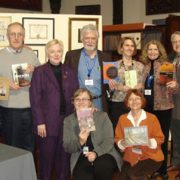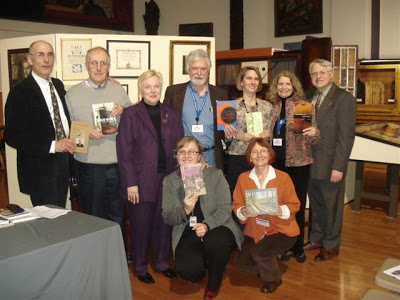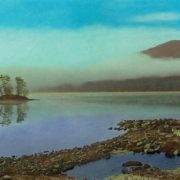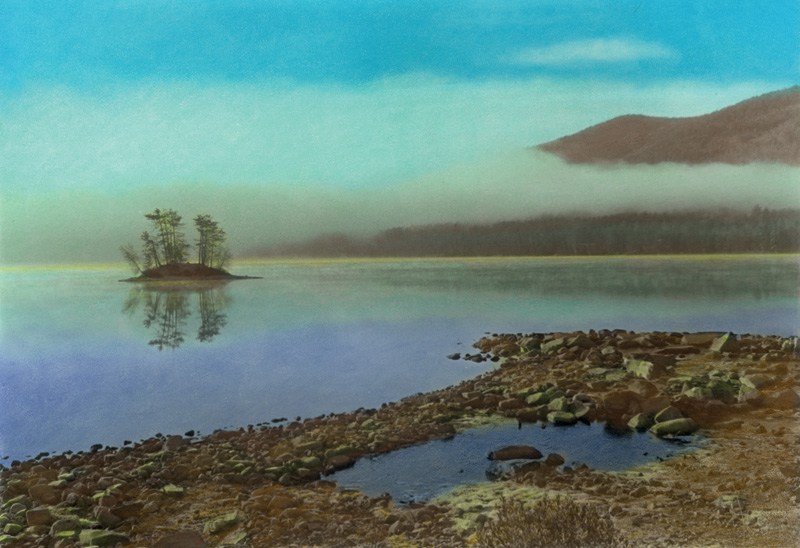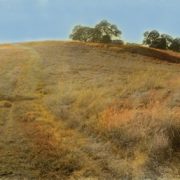I first became acquainted with Cervena Barva Press through Kevin Gallagher, an author from my own press, who sent me a copy of his Cervena Barva chapbook Isolate Flecks. One of the great things about being an editor of a small press without an editorial hierarchy is that one is the sole arbiter of what gets published, allowing for a very personal array of material. If the author is dead in the 21st century, the editor most certainly is not, with present home-printing and POD technology making it easier than ever before to run a small press out of one’s very own garret, attic, coldwater flat, trailer or apartment. Consequently, small publishing ventures allow us to look into the singular tastes of their respective editors.
Some choose to hone a very specific editorial aesthetic, publishing works that highlight a particular facet of the art, whereas other editors operate primarily by whimsy, publishing whatever disparate works catch their eye and appeal to them. It is the former editorial program I most enjoy, and the one from which I approach my own endeavors at Cy Gist press. Likewise, this seems to be the operating principle of Gloria Mindock, editor of Cervena Barva Press, at least among the chapbooks I have had the opportunity to read: Ten Songs from Bulgaria by Linda Nemec Foster, Isolate Flecks by Kevin Gallagher, The News Today by George Held and A Cure for Suicide by Larissa Shmailo. The presentation of these books is utilitarian and no-nonsense; they are half-letter fold, saddle-stapled chaps with various photographs and/or paintings for cover art. The general aesthetic of the poems is likewise straight-ahead—with the authors employing parse-able syntax and generally left-justified lines. Within this general framework, however, there is considerable diversity amongst these various authors.
Ten Songs from Bulgaria is a series of ten-line ekphrastic poems based on the photographs of Bulgarian photographer Jacko Vassilev. An initial reading without having seen the photographs offered a sometimes lyric, sometimes narrative, always “realistic” glimpse of a continuum filled with history, abstraction and melancholy—the mood I often receive from black and white photographs from Eastern Europe. Within each ten lines an explicit story is told—of dancing bears, the patron saint of pilots, and young shepherds in front of old churches. “Pure art beyond your imagination,” as Foster says in “Cry of Freedom.” Ekphrasic work is best experience alongside its visual counterpart, so I looked up the photographs, which, luckily, all seemed to come from a 2005 Harpers’ Magazine feature. Looked at alongside the photographs, the poems provided a melancholy soundtrack to Vassilev’s sad, expressionistic images. Human eyes stare out at the viewer in many of the photographs, and the poems seem likewise sentient and inhabited. As with all good ekphrastic work, these poems and photographs illuminate each other—like the moon is lit by the sun. It is unfortunate that the small press form and intellectual property laws prohibit the presentation of ekphrastic work alongside its “source” material, since this is the best way to experience such work, and this chapbook is no exception. However, the poems also succeed admirably on their own, and call forth a gloaming mood similar to that of the dimly lit photographs, assisted also by the grey paper stock upon which the chapbook is printed.
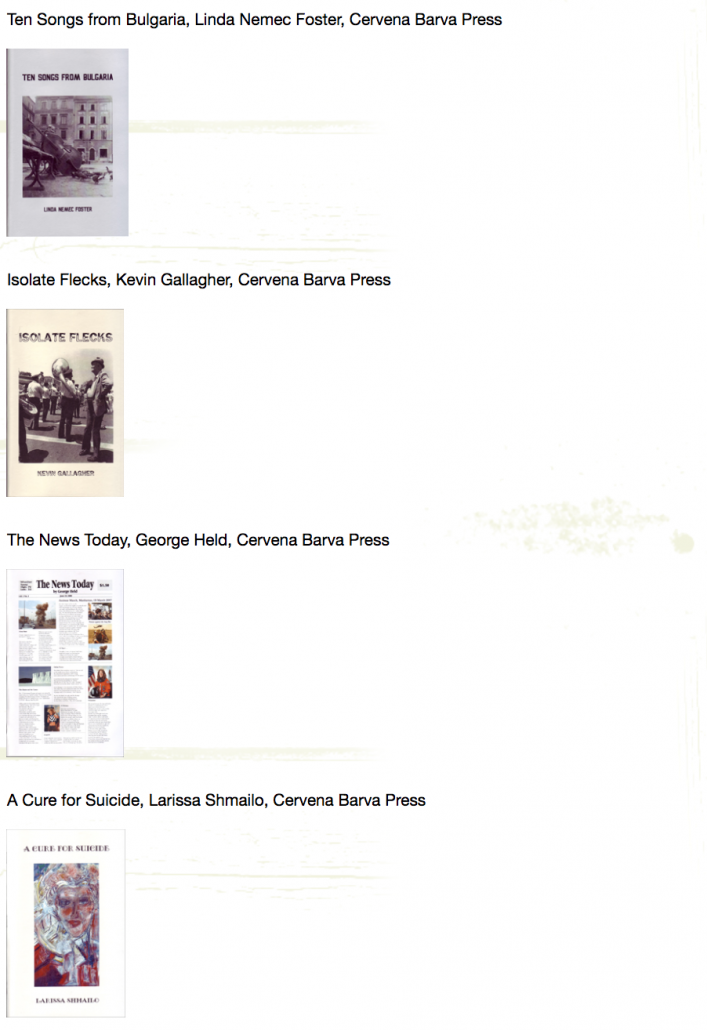
Isolate Flecks showcases Gallagher’s compelling narrativity that never uses its transparency as a crutch. A poet of considerable range, he is always satisfying—be it in straightforward, almost nostalgic reminiscences of childhood as in “Luis Tiant Fan Club Album” and “The Kid’s Economy,” or in more abstract moments like “No Parade”: “Under confetti / Of paper records // Stacked mattresses / A mess of peas.” Gallagher’s narrative poems are true songs of New England, which seem to enigmatically capture the essence of the region and its ghosts such as Gloucester’s whose “Gill nets hover the ocean floor / like long volleyball nets.” Likewise, Gallagher casts his nets wide and turns up a menagerie of compelling stories and images at once easily recognizable and mysterious.
At 46 pages, Larissa Shmailo’s A Cure for Suicide pushes the limits of the chapbook size; Shmailo pushes a number of other limits while she’s at it. Seemingly like its author, the small book is a handful. These poems cut a singular figure, obsessed with and at the same time afraid of intimacy. At times brief and breathless and at others expansive and frenetic, Shmailo seems to be in constant motion, “I stutter like an old gun: / Take me / Know / The fast love of my hair.” While at times these poems’ excesses can be cloying, they seem to accomplish their intended effect of leaving the reader bewildered and somewhat breathless. A Cure for Suicide gets considerable mileage out of the lyric ‘I,’ but could have benefited from some slight editing or more frequent variation of pace or pronoun for the sake of counterpoint, such as some of the book’s more atypical, but most satisfying—the sparsely-verbed “Harlem Line” and “Exorcism (Found Poem)”’s quasi-religious litanies, and a few fewer femme-fatale relationship autopsies of the order of “Personal” and “Abortion Hallucination.” Overall, however, the book’s compelling moments outnumber its overly familiar ones.
George Held’s book of ripped-from-the-headlines poems, The News Today does what you expect it to. Held is irate about the things that we educated liberals have been irate about since the 1970’s, with the requisite amount of world weary Baby-Boomer self-consciousness (“We showed up again, our hope as threadbare / As the clothes of the oldest Lefties on parade.”) woven in to assure the reader that the author is not being, like, utopian or something. The News Today is most satisfying in its least-expected and most empathic moments—offering human kindness to the erstwhile astronaut in “Nowacked” or cutting Britney Spears some slack in “O Britney.” It is least satisfying at those times where it offers odes to what seems to be a freshman composition textbook with “big” talking points such as GLOBAL WARMING (“The Glacier and the Canary”) VIOLENCE IN SCHOOLS (“Home Made”) and PATRIOTISM (“Patriotism”). Held is an author content to wear his heart and his politics on his sleeve, but the book’s strongest moments are its most ambiguous—such as the weirdly could-be-perturbed-could-be-into-it rhymed couplets of “Be My Pet” (“Wear a collar, like a collie / Be my lap dog and my dolly”) or the aforementioned “O Britney.”
There should be enough for any reader to laud or lambaste as I have here amongst Cervena Barva’s formidable catalog. Mindock’s editorial eye seems to have something for everyone and the press is inspirational in its apparent doggedness in tough times. Amidst a climate of general nebulousness, any one of these scrappy little (mostly) straight-forward books offers a bit of contrapuntal saltiness to the sweet or a porthole in the general opacity and are certainly worth taking a look at no matter what one’s aesthetic allegiances are.
Originally Published by Gently Read Literature, click here to view article.


